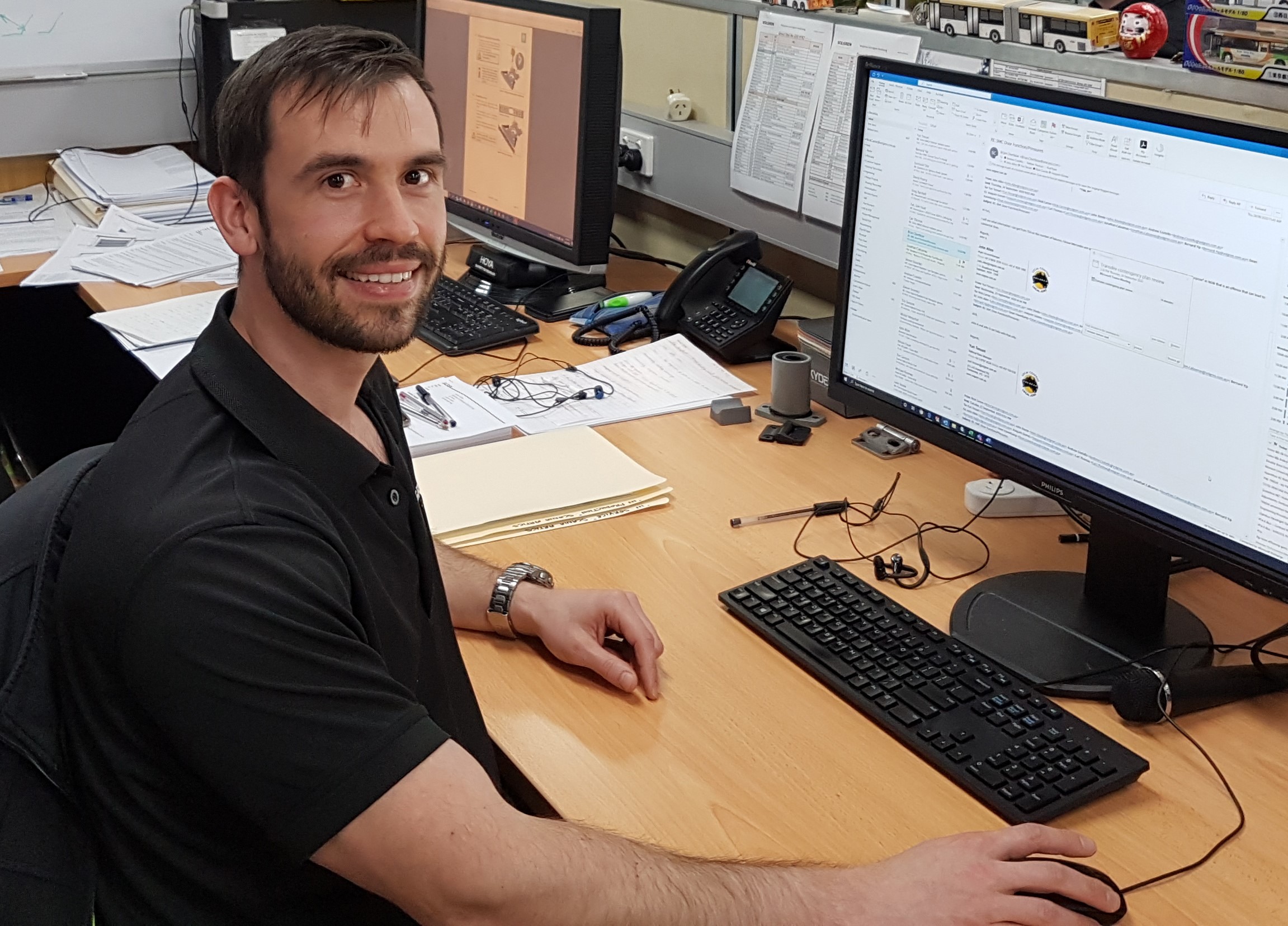Nick Carnie’s Volgren story begins not on an assembly line or in a meeting with an engineer but at a university. It was while completing his Bachelor of Industrial Design at Monash University, one of Australia’s most highly regarded higher education institutions, that Nick was introduced to the bus body manufacturer.
In 2010, Volgren approached the Monash faculty of art, design and architecture – better known as MADA – to improve the design of their route buses. Over several years, Monash and Volgren collaborated on a new vision for what an Australian-manufactured bus could be and the result – the flagship Optimus – was nothing less than extraordinary. The award-winning vehicle, loved by passengers and drivers alike, boasted a lower lifecycle cost than any other bus of its type on the market.
And Nick played a crucial part in the whole process.
“I had gone from completing my final project of my [degree] to presenting product concepts to subject matter experts at Volgren within a matter of 12 weeks. Presenting to Volgren staff, many of whom had worked at Volgren longer than I had been alive – Ross Herring, for example – presented an extremely steep learning curve.”
It was challenging, but Nick says he was well supported by both the Monash and Volgren teams. His work was considered excellent, and once the project ended Volgren offered him a job.
Since then, Nick has worked in design, but also in engineering, business development and project management. Today he is one of the company’s Engineering Leaders, and specialises in Product Development, Engineering Systems and Aftersales Support.
During his tenure, he has worked with some Volgren legends, but is unwilling to name one mentor or colleague who’s had more of an influence on his career than anyone else. That’s simply because there have been so many.
“I am proud to say it’s likely every person in the Engineering team past or present has taught me something along the way. From solving structural design challenges to creating clever solutions to neatly interface interior components; from understanding and interpreting electrical schematics all the way through to getting my hands dirty routing airlines through an articulated bus. I’ve even fixed electrical issues on a video call while standing at a bus depot in Tokyo, Japan.
“All that experience has been valuable in my personal and professional development.”
Nick has accomplished some remarkable professional achievements over the last ten years, but it’s his work on the buses Volgren built for the city of Tokyo, beginning in 2017, that he takes most pride in.
“The opportunity to manage the challenging project was fantastic. Drawing from earlier experience delivering the articulated buses to [the Nishitetsu Railway Company, Japan’s largest bus operator], the larger scale of this project was definitely a welcome challenge.”

“The opportunity to travel to Japan a number of times to meet with partners, customers and other suppliers was extremely rewarding. It was a great source of pride to see a bus built in Dandenong driving the streets of Tokyo.”
A lot has changed at Volgren since then. Nick says the company has undergone a transformation that may seem nominal from afar, but which has made a significant difference to their operation.
“In my time at Volgren, the organisation has changed from a custom bus manufacturer to a manufacturer of mass-customised vehicles. [This] has meant a vehicle that was once built in one location in the factory, painted, then finished in another single location now runs through a production line much like what you would see in companies like Toyota or indeed Marcopolo Brazil.
“This production flow, optimised for efficiency, means that our expert production staff now focus less on single unit fabrication and ‘coach building’ and more on the assembly of modules. It also enables those experts to focus their attentions on what’s next for Volgren: more specialised builds and prototypes like double decks, full low-floor vehicles built for Japan, alternative drive trains and electric buses – with many others to come.”
The buses – including the Optimus – have changed, too, which is only natural at a company constantly seeking to improve on what already exists. But Nick is delighted that some of the concepts and designs he worked on almost a decade ago are still a central part of Optimus buses built in 2020.
“Seeing a Volgren driving around the streets makes me extremely proud of the work [we] do.
“I remember sitting in a café with my grandfather in Queensland years ago, talking about work and seeing a Volgren bus drive past us just metres away. Another five went past before we had finished lunch. It was hugely gratifying and remains so each time I see a Volgren on the road.”

